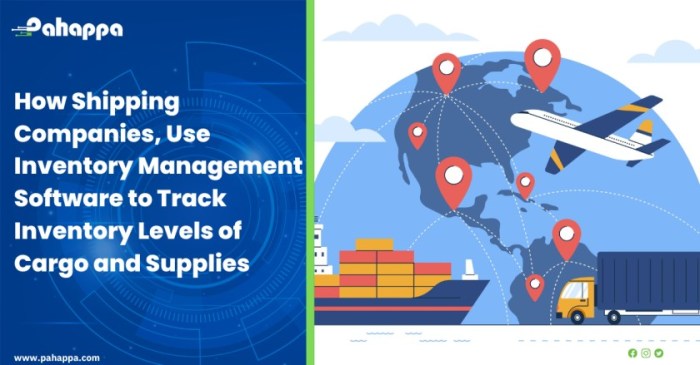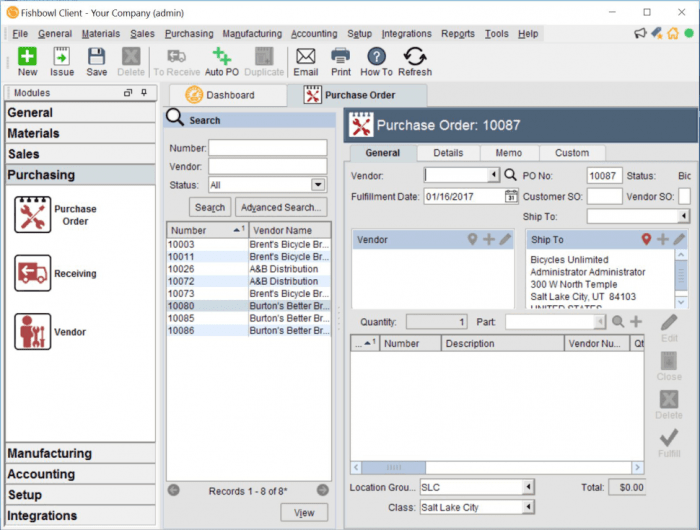Shipping and inventory software represents a critical component of modern business operations, offering a powerful blend of efficiency and control. Effective management of inventory and shipping processes is no longer a luxury but a necessity for businesses aiming to thrive in today’s competitive landscape. These sophisticated systems integrate various aspects of supply chain management, providing real-time visibility into stock levels, order fulfillment, and delivery timelines.
This integration streamlines workflows, reduces errors, and ultimately contributes to significant cost savings and improved customer satisfaction.
From small startups to large enterprises, the benefits are widespread. Features such as automated order processing, real-time tracking, and integrated reporting capabilities allow businesses to optimize their operations and make data-driven decisions. The software’s adaptability to various industry needs ensures its relevance across diverse sectors, making it a valuable asset for companies of all sizes and types.
In today’s fast-paced business environment, efficient inventory management and seamless shipping processes are paramount to success. Falling behind on either front can lead to lost sales, unhappy customers, and ultimately, decreased profitability. This is where shipping and inventory software steps in, offering a powerful solution to streamline operations and optimize your supply chain. This detailed guide will explore the intricacies of these crucial software solutions, helping you understand their features, benefits, and how to choose the right one for your business needs.
Understanding the Importance of Integrated Shipping and Inventory Software
Many businesses mistakenly treat inventory management and shipping as separate entities. However, integrating these processes through specialized software creates a synergistic effect, leading to significant improvements in efficiency and accuracy. By connecting inventory levels with shipping orders, businesses can avoid common pitfalls such as:
- Stockouts: Real-time inventory tracking prevents overselling and ensures you always have enough stock to fulfill orders.
- Overstocking: Accurate demand forecasting, facilitated by data analysis within the software, minimizes excess inventory and reduces storage costs.
- Shipping Errors: Automated order processing and label generation reduce the risk of human error, leading to faster and more accurate shipping.
- Increased Operational Costs: Streamlined processes translate to reduced labor costs, faster turnaround times, and lower shipping expenses.
- Improved Customer Satisfaction: Faster order fulfillment and accurate tracking information lead to happier customers and increased loyalty.
Key Features of Effective Shipping and Inventory Software
The best shipping and inventory software offers a comprehensive suite of features designed to optimize every aspect of your supply chain. These features typically include:

Source: pahappa.com
Inventory Management Features:
- Real-time Inventory Tracking: Provides a constantly updated view of your stock levels across all locations.
- Automated Stock Replenishment: Triggers automatic purchase orders when inventory reaches predefined thresholds.
- Demand Forecasting: Uses historical data to predict future demand and optimize stock levels.
- Lot and Serial Number Tracking: Enables precise tracking of individual items, crucial for industries with strict regulations (e.g., pharmaceuticals).
- Barcode and RFID Integration: Streamlines inventory counting and tracking processes.
- Warehouse Management System (WMS) Integration: For larger businesses, integrating with a WMS provides advanced warehouse management capabilities.
Shipping and Fulfillment Features:, Shipping and inventory software
- Order Management: Centralized platform for managing all incoming and outgoing orders.
- Automated Order Processing: Automates tasks such as label generation, packing slips, and shipping notifications.
- Shipping Label Generation: Integrates with major carriers (e.g., FedEx, UPS, USPS) for discounted rates and automated label printing.
- Real-time Shipping Tracking: Provides customers with up-to-date tracking information.
- Multi-Carrier Shipping: Allows businesses to compare rates and choose the most cost-effective carrier for each shipment.
- Returns Management: Streamlines the returns process, tracking returned items and managing refunds.
Reporting and Analytics:
- Sales Reports: Provides insights into sales trends and performance.
- Inventory Reports: Tracks inventory levels, turnover rates, and other key metrics.
- Shipping Reports: Analyzes shipping costs, delivery times, and carrier performance.
- Customizable Dashboards: Allows users to create customized dashboards to monitor key performance indicators (KPIs).
Choosing the Right Shipping and Inventory Software
Selecting the right software depends on several factors, including your business size, industry, budget, and specific needs. Consider these key aspects:
- Scalability: Choose software that can grow with your business.
- Integration Capabilities: Ensure the software integrates with your existing systems (e.g., accounting software, e-commerce platform).
- User-Friendliness: The software should be intuitive and easy to use for your team.
- Customer Support: Reliable customer support is essential for resolving issues and getting assistance.
- Pricing: Compare pricing models (e.g., subscription-based, one-time purchase) and ensure it fits your budget.
Popular Shipping and Inventory Software Options
The market offers a wide range of shipping and inventory software solutions. Some popular options include (Note: This is not an exhaustive list, and specific features and pricing may vary):
- Shopify: A popular e-commerce platform with integrated shipping and inventory management features.
- ShipStation: A dedicated shipping solution that integrates with various e-commerce platforms and marketplaces.
- Fishbowl Inventory: A comprehensive inventory management software with robust features for manufacturing and distribution.
- Zoho Inventory: A cloud-based inventory management solution with features for order management, shipping, and reporting.
- NetSuite: A comprehensive ERP (Enterprise Resource Planning) system that includes robust inventory and shipping modules.
Frequently Asked Questions (FAQ)
- Q: What is the difference between inventory management software and shipping software?
A: Inventory management software focuses on tracking and managing stock levels, while shipping software handles order processing, label generation, and carrier integration. Integrated solutions combine both functionalities. - Q: How much does shipping and inventory software cost?
A: Costs vary widely depending on the features, scalability, and vendor. Expect to pay anywhere from a few dollars per month for basic plans to thousands of dollars per month for enterprise-level solutions. - Q: Can I integrate my existing e-commerce platform with shipping and inventory software?
A: Most reputable software offers integrations with popular e-commerce platforms like Shopify, WooCommerce, and Magento. Check the software’s compatibility before purchasing. - Q: What are the benefits of using cloud-based shipping and inventory software?
A: Cloud-based solutions offer accessibility from anywhere, automatic updates, and reduced IT infrastructure costs. - Q: How can I choose the right software for my business?
A: Consider your business size, industry, budget, and specific needs. Start by identifying your key requirements and then compare different software options based on those criteria.
References
Call to Action
Ready to optimize your shipping and inventory processes and take your business to the next level? Explore the options mentioned above and choose the solution that best fits your needs. Don’t hesitate to contact us if you have any questions or need assistance in selecting the right software for your business.
In conclusion, the implementation of robust shipping and inventory software offers a clear path towards enhanced operational efficiency and profitability. By leveraging the power of automation, data analysis, and integrated systems, businesses can gain a significant competitive advantage. The ongoing evolution of this technology promises even greater sophistication and integration in the future, further solidifying its importance in the ever-changing business world.
Investing in the right software solution is an investment in the future success of any organization.
Question & Answer Hub: Shipping And Inventory Software
What are the key features to look for in shipping and inventory software?
Key features include real-time inventory tracking, automated order processing, order fulfillment management, shipping label generation, integration with carriers, reporting and analytics dashboards, and user-friendly interfaces.
How much does shipping and inventory software typically cost?
Costs vary significantly based on features, scalability, and vendor. Pricing models range from subscription-based fees to one-time purchases, with costs potentially influenced by the number of users and the complexity of the system.

Source: gmpis.com
Can shipping and inventory software integrate with my existing accounting software?

Source: imgix.net
Many solutions offer integration capabilities with popular accounting platforms, streamlining financial processes and providing a more holistic view of business performance. However, compatibility should be verified before purchasing.
What level of technical expertise is required to use shipping and inventory software?
Most modern systems are designed with user-friendly interfaces, requiring minimal technical expertise. However, training may be beneficial to fully utilize all features and functionalities.